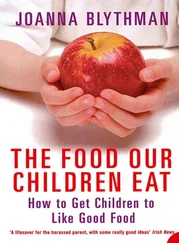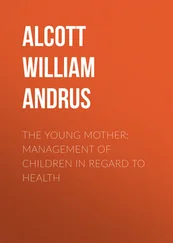Charles West - The Mother's Manual of Children's Diseases
Здесь есть возможность читать онлайн «Charles West - The Mother's Manual of Children's Diseases» — ознакомительный отрывок электронной книги совершенно бесплатно, а после прочтения отрывка купить полную версию. В некоторых случаях можно слушать аудио, скачать через торрент в формате fb2 и присутствует краткое содержание. Издательство: Иностранный паблик, Жанр: Руководства, Медицина, foreign_desc, на английском языке. Описание произведения, (предисловие) а так же отзывы посетителей доступны на портале библиотеки ЛибКат.
- Название:The Mother's Manual of Children's Diseases
- Автор:
- Издательство:Иностранный паблик
- Жанр:
- Год:неизвестен
- ISBN:нет данных
- Рейтинг книги:5 / 5. Голосов: 1
-
Избранное:Добавить в избранное
- Отзывы:
-
Ваша оценка:
- 100
- 1
- 2
- 3
- 4
- 5
The Mother's Manual of Children's Diseases: краткое содержание, описание и аннотация
Предлагаем к чтению аннотацию, описание, краткое содержание или предисловие (зависит от того, что написал сам автор книги «The Mother's Manual of Children's Diseases»). Если вы не нашли необходимую информацию о книге — напишите в комментариях, мы постараемся отыскать её.
The Mother's Manual of Children's Diseases — читать онлайн ознакомительный отрывок
Ниже представлен текст книги, разбитый по страницам. Система сохранения места последней прочитанной страницы, позволяет с удобством читать онлайн бесплатно книгу «The Mother's Manual of Children's Diseases», без необходимости каждый раз заново искать на чём Вы остановились. Поставьте закладку, и сможете в любой момент перейти на страницу, на которой закончили чтение.
Интервал:
Закладка:
When the nature of these swellings was not understood, they used to be poulticed, and to be opened with a lancet to let out their contents. We know now, however, that we have nothing to do but to let them alone; that by degrees the blood will be absorbed and the tumour will disappear, and as it does so we may trace the gradual transformation of the membrane which covered it into bone, as we feel it crackling like tinsel under the finger. Two, three, or four weeks may be needed for the entire removal of one of these blood-swellings. The doctor will at once recognise its character, and you will then have nothing to do but to wait—often, unhappily, so much harder for the anxious mother than to meddle.
Ruptured Navel.—There is a period some time before the birth of a child when the two halves of its body are not united in front, as they become afterwards; and hare-lip or cleft-palate sometimes remains as the result of the arrest of that development which should have closed the fissured lip or united the two halves of the palate.
In a similar way it happens sometimes that though the skin is closed, the muscles of the stomach (or, more properly speaking, of the belly) are not in the close apposition in which they should be, so that the bowels are not supported by the muscles, but protected only by the skin.
More frequently than this, especially in the case of children who are born before the time, the opening through which the navel string passes is large at birth, and fails to close as speedily and completely as it should do afterwards. When everything goes on as it ought, the gradual contraction of the opening helps to bring about the separation of the navel string and its detachment, and the perfect closure of the opening takes place at the same time, between the fifth and the eighth day after birth.
If this does not occur, the bowels are very apt to protrude through the opening, and if allowed to do so for weeks or months, the opening becomes so dilated that its closure is impossible, and the child grows up afflicted permanently with rupture through the navel. This is always an inconvenience, sometimes even a source of serious danger; but if means are taken to prevent the condition becoming worse, nature seldom fails eventually to bring about a cure, and to effect the complete closure of the opening.
If the muscles on either side do not come into apposition, but leave a cleft between them, the infant should constantly wear a broad bandage of fine flannel round the stomach, not applied too tightly, in order to give support. The circular bandages of vulcanised india-rubber with a pad in the centre are nowise to be recommended. The pad is apt to become displaced, and to press anywhere but over the navel, while its edges irritate the infant's delicate skin, and the pressure which it exerts if it is sufficiently tight to retain its place interferes with respiration.
A pad composed of pieces of plaster spread on wash-leather, and of graduated sizes and kept in place by adhesive strapping, 7 7 These plasters for ruptured navel in sets of a dozen are to be had of Ewen, 106 Jermyn Street, St. James's, London, and I dare say at many other places besides.
answers the purpose of preventing the protrusion at the navel, and of thus facilitating the closure of the ring better than any other device with which I am acquainted. They need, however, to be continued even for two or three years, and though they should have been left off it is wise to resume their use if the child should be attacked by whooping-cough, diarrhœa, or any other ailment likely to occasion violent straining.
CHAPTER V.
ON THE DISORDERS AND DISEASES OF CHILDREN AFTER THE FIRST MONTH, AND UNTIL TEETHING IS FINISHED
Infantile Atrophy.—In by far the greater number of instances, the wasting of young children is due to their being fed upon food which they cannot digest, or which when digested fails to yield them proper nourishment. I quoted some figures in my introductory remarks, to show from the evidence obtained at Berlin how much larger was the proportion of deaths under the age of one year among hand-fed infants than among those brought up at the breast. Foundling hospitals on the Continent, in which the children are all drawn from the same class, and subjected in all respects to a similar treatment, except that in some they are fed at the breast, in others brought up by hand, show a mortality in the latter case exactly double of that in the former.
It is as idle to ignore these facts, and to adduce in their disproof the case of some child brought up most successfully by hand, as it would be to deny that a battle-field was a place of danger because some people had been present there and had come away unwounded.
But it is always well not merely to accept a fact, but also to know the reason why a thing is so. The reason is twofold: partly because the different substitutes for the mother's milk, taken for the most part from the vegetable kingdom, are less easy of digestion than the milk, and partly because, even were they digested with the same facility, they do not furnish the elements necessary to support life in due proportion.
All food has to answer two distinct purposes: the one to furnish materials for the growth of the body, the other to afford matter for the maintenance of its temperature; and life cannot be supported except on a diet in which the elements of nutrition and those of respiration bear a certain proportion to each other. Now, in milk, the proper food of infants, the elements of the former are to those of the latter about in the proportion of 1 to 2, while in arrowroot, sago, and tapioca they are only as 1 to 26, and in wheaten flour only as 1 to 7. If to this we add the absence in these substances of the oleaginous matters which the milk contributes to supply the body with fat, and the smaller quantity, and to a certain extent the different kind, of the salts which they contain, it becomes apparent that by such a diet the health if not the life of the infant must almost inevitably be sacrificed.
But these substances are not only less nutritious, they are also less easy of digestion than the infant's natural food. We all know how complex is the digestive apparatus of the herbivorous animal, of which the four stomachs of the ruminants are an instance, and how large is the bulk of food in proportion to his size which the elephant requires, compared with that which suffices for the lion or the tiger.
The stomach of the infant is the simple stomach of the carnivorous animal, intended for food which shall not need to stay long in that receptacle, but shall be speedily digested; and it is only as the child grows older, and takes more varied food, that the stomach alters somewhat in form, that it assumes a more rounded shape, resembling somewhat that of the herbivorous animal, and suited to retain the food longer. The young of all creatures live upon their mother for a certain time after birth; but in all the preparation for a different kind of food, and with it for an independent existence, begins much sooner and goes on more rapidly than in man. Young rabbits are always provided with two teeth when born, and the others make their appearance within ten days. In the different ruminants the teeth have either begun to appear before birth, or they show themselves a few days afterwards; and in either case dentition is completed within the first month, and in dogs and cats within the first ten weeks of existence.
In the human subject the process of teething begins late, between the seventh and the ninth month, and goes on slowly: the first grinding teeth are seldom cut before the beginning of the second year, and teething is not finished until after its end. Until teething has begun the child ought to live exclusively on the food which nature provides; for until that time the internal organs have not become fitted to digest other sustenance, and the infant deprived of this too often languishes and dies. To get from other food the necessary amount of nourishment, that food has to be taken in larger quantities, and, from the difficulty in digesting it, needs to remain longer in the stomach than the mother's milk. One of the results of the indigestibility of the food is that the child is often sick, the stomach getting rid of a part of that food which it is unable to turn to any useful purpose; and so far well. But the innutritious substances do not relieve the sense of hunger. The child cries in discomfort, and more is given to it, and by degrees the over-distended stomach becomes permanently dilated, and holds a larger quantity than it was originally meant to contain. The undigested mass passes into a state of fermentation, and the infant's breath becomes sour and offensive, it suffers from wind and acid eructations, and nurses sometimes express surprise that the child does not thrive since it is always hungry. While some of the food is got rid of by vomiting, some passes into the intestines, and there becomes putrid, as the horribly offensive evacuations prove. They come away, large and solid and white, for the secretion of the bile is inadequate to complete that second digestion which should take place in the intestines; or else the irritation which they excite occasions diarrhœa—a green putty-like matter comes away mixed with a profuse watery discharge.
Читать дальшеИнтервал:
Закладка:
Похожие книги на «The Mother's Manual of Children's Diseases»
Представляем Вашему вниманию похожие книги на «The Mother's Manual of Children's Diseases» списком для выбора. Мы отобрали схожую по названию и смыслу литературу в надежде предоставить читателям больше вариантов отыскать новые, интересные, ещё непрочитанные произведения.
Обсуждение, отзывы о книге «The Mother's Manual of Children's Diseases» и просто собственные мнения читателей. Оставьте ваши комментарии, напишите, что Вы думаете о произведении, его смысле или главных героях. Укажите что конкретно понравилось, а что нет, и почему Вы так считаете.











